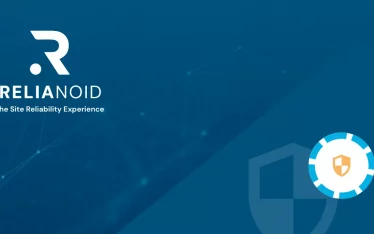In 2025, the digital threat landscape continues to evolve rapidly, with Distributed Denial of Service (DDoS) attacks reaching new levels of scale, complexity, and impact. What was once the domain of high-level cybercrime groups is now accessible to virtually anyone, thanks to the rise of DDoS-for-hire services. As these attacks become more frequent and sophisticated, robust mitigation strategies are essential. RELIANOID’s advanced application delivery and security platform is built to withstand these evolving threats, helping organizations stay online and secure.
Understanding DDoS: A Recap
A DDoS attack leverages multiple compromised systems to flood a target with overwhelming traffic, disrupting services and denying access to legitimate users. These attacks exploit weaknesses in network protocols and scale through the use of botnets—often composed of hijacked IoT devices.
What’s Happening in 2025?
1. Attack Frequency and Intensity Surge
As predicted, DDoS attacks have escalated. In the first half of 2025 alone, several organizations reported campaigns surpassing 3 Tbps, often occurring in coordinated waves. Amplification methods such as DNS and NTP reflection have become more refined. RELIANOID continues to counter this with adaptive rate-limiting and dynamic filtering at the edge, capable of absorbing volumetric surges in real time.
2. Critical Infrastructure Under Fire
The trend has intensified. Attacks targeting healthcare, energy, and transportation systems caused regional outages in Q2 2025. These sectors remain top targets due to their sensitivity to downtime. RELIANOID’s geo-distributed load balancing and automatic failover have helped maintain availability for customers in these industries.
3. Politically Motivated DDoS Attacks
This prediction has held true, particularly during major elections and geopolitical conflicts in early 2025. Hacktivist groups have launched high-profile DDoS campaigns as digital protest tools. RELIANOID’s behavioral analytics and early threat detection have proven essential for customers exposed to politically motivated threats.
4. IoT-Based Botnets Expand
Unsecured IoT devices continue to be a major vulnerability. In fact, new botnets like “Wavestone” have emerged, leveraging smart home appliances and industrial IoT systems. RELIANOID’s intelligent fingerprinting technology detects such botnets, even when distributed across residential IP ranges.
5. Multi-Vector Attacks Become the Norm
This is now the standard. Campaigns mixing SYN floods, HTTP/2 floods, DNS amplification, and even TLS renegotiation abuse are reported weekly. RELIANOID’s layered mitigation and deep protocol inspection allow rapid adaptation to evolving vectors.
Looking Ahead: Mid-Year 2025 Insights
AI-Driven Attack Strategies Emerge
We are seeing early signs of AI-enhanced attack orchestration. Threat actors are testing ML algorithms to adjust payload frequency and disguise malicious traffic patterns. RELIANOID’s machine learning models, trained on live traffic patterns, are being continuously refined to stay ahead.
Decentralized Botnets and Encrypted C2 Channels
Encrypted command-and-control channels are now widespread, especially over HTTPS and custom VPN-like protocols. RELIANOID’s integration with SIEM platforms and flow-based analytics continues to be a critical asset in detecting these hidden networks.
Cloud Infrastructure in the Crosshairs
Cloud services remain a primary target. In particular, public API endpoints and Kubernetes ingress controllers have been attacked. RELIANOID secures these environments with application-layer controls, rate limiting, and namespace-aware segmentation.
DDoS-as-a-Service Market Grows
Unfortunately, this market is thriving. The first half of 2025 has seen a 30% increase in listings on underground marketplaces. Many offer GUI-based dashboards to configure multi-vector attacks. RELIANOID’s cloud-native protections provide real-time alerts and proactive traffic sanitization, ensuring faster incident response.
How RELIANOID Defends Against DDoS
- Traffic Analysis and AI-based Anomaly Detection: RELIANOID establishes behavioral baselines and flags suspicious traffic instantly.
- Advanced Rate Limiting: Automatically throttles abusive clients without affecting legitimate users.
- IP Filtering and Geo-blocking: Integrated threat intelligence blocks known bad actors.
- Deep Protocol Inspection: Our solution parses and validates packets at multiple layers to detect stealthy threats.
- Redundant and Distributed Architecture: Load balancing, hot restarts, and global failover keep your services online even during prolonged attacks.
Conclusion
Now at the midpoint of 2025, the DDoS threat landscape has evolved exactly as projected—and in some cases, even faster. Attacks are now larger, smarter, and easier to deploy. In this high-stakes environment, reactive defenses are not enough. RELIANOID combines speed, intelligence, and resilience, giving organizations the tools to anticipate, absorb, and counter even the most aggressive DDoS campaigns.
Discover how RELIANOID protects your infrastructure in the age of advanced cyber threats. Visit us and try our solutions.





